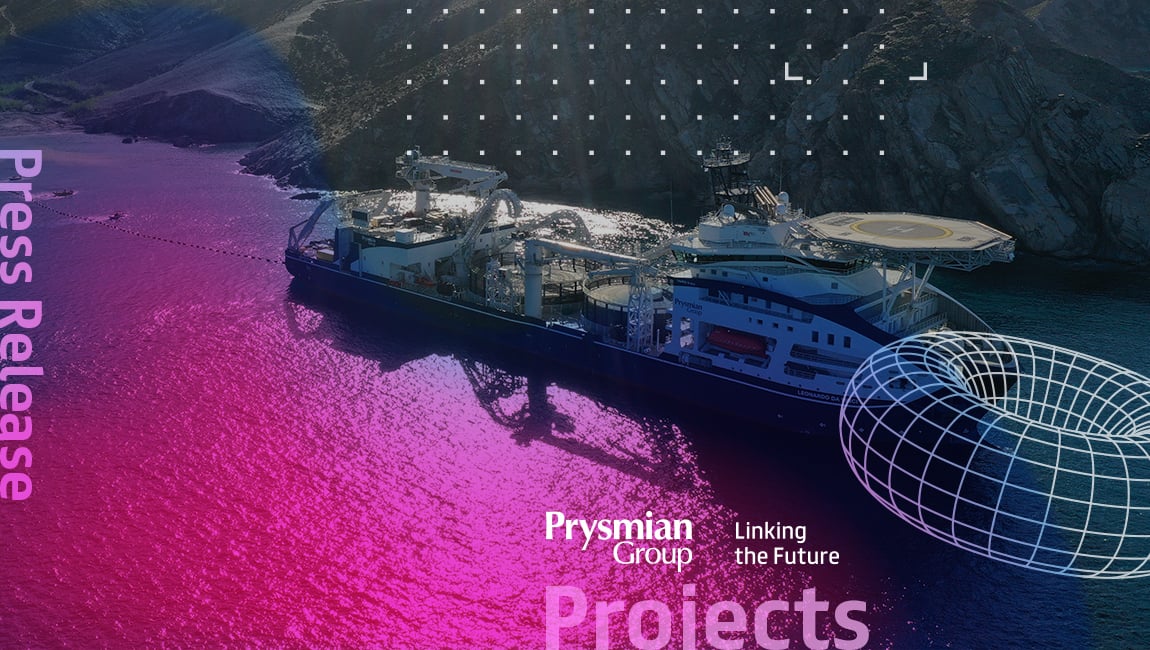Prysmian to further expand its cable-laying vessel fleet to support the global power grid upgrade for the energy transition
Two additional cable-laying vessels to consolidate the widest fleet in the industryInnovation and green credentials to execute submarine cable projects
Prysmian Group, world leader in the energy and telecom cable systems industry, announces an investment of approximately €350 million for two new cutting-edge cable-laying vessels that will reinforce Prysmian’s submarine project execution capabilities. This capex is already included in the mid - term outlook communicated by the Group on 5th October during the Capital Markets Day.
“The market is tremendously growing, and we are facing an increasing demand for submarine cable systems for interconnections and offshore wind farm projects both in Europe and in the US,” stated Hakan Ozmen, EVP Projects BU, Prysmian Group. “With this investment, we confirm Prysmian’s undisputed key role in the submarine cable business and its proven capability to act as a truly reliable and dedicated leader in the execution of turn-key complex projects, supporting the Group’s long-term growth perspectives,” he concluded.
The first cable-laying vessel will be an evolution of the Monna Lisa class. With a length of approximately 185 m and a breadth of about 34 m, the new vessel will be equipped with advanced cable installation solutions, such as three carousels for a total capacity of 19,000 tonnes, positioning itself among the highest cable loading capacity vessels in the market and enabling a reduced transportation time from the factory to the site, for an overall improved project efficiency. A bollard pull in excess of 180 tonnes will allow the vessel to perform complex installation operations of simultaneous cable lay and burial (up to 4 cables) with a variety of ploughs, for an unrivalled optimisation of offshore operations. The vessel will be equipped with state-of-the-art DP3 positioning and seakeeping systems and will be operational by beginning of 2027. As for Leonardo da Vinci and Monna Lisa, the new vessel will be built by the VARD Group (a subsidiary of the Fincantieri Group), one of the world leaders in the design and construction of specialised vessels for the offshore market.
The other vessel will be the evolution of the Ulisse class, with a length of approximately 167 m and a breadth of about 40 m and will be equipped by two carousels (one of them split in two concentric sections) for a total cable loading capacity of 10,000 tonnes. The state-of-the art DP2 positioning, and seakeeping systems and an eight-point mooring system will enable the ship to meet its operating requirements specialized in shallow-water cable laying and burial installation, even in harsh environmental conditions. The vessel will be operational by the first half of 2025.
Both vessels will have outstanding green credentials: they will be equipped with high-voltage shore connection systems to power them with clean energy during loading operations, diesel generators suitable for biodiesel blends and battery hybrid systems only for the deep-water-vessel, due to its specific activity.
Prysmian can count on a fleet currently composed of six state-of-the-art cable-laying vessels: Giulio Verne, its former flagship with a track record of about 35 years of cable installation projects; Cable Enterprise, a very versatile DP2 vessel, mainly used for installation of offshore wind farm export cables; Ulisse, an efficient barge for shallow-water installation; Barbarossa, a small barge, recently added to the fleet and specifically designed for operations in very shallow water and intertidal zones; Leonardo da Vinci and Monna Lisa — the latter still under construction — which are the world’s most advanced cable-laying vessels, unrivalled for installation of long HVDC interconnections and in very deep water environment. Prysmian has also the widest range of high-tech burial equipment, including Hydroplows, HD3 Ploughs and Post Lay Burial machines (Sea Mole, SeaRex and Otter).



